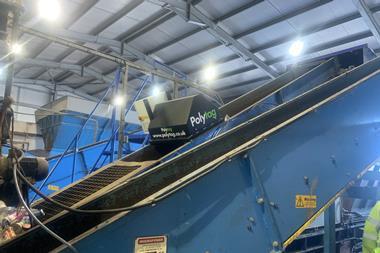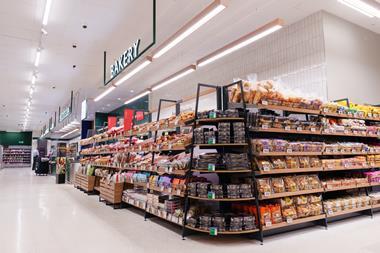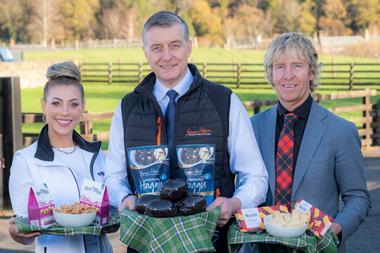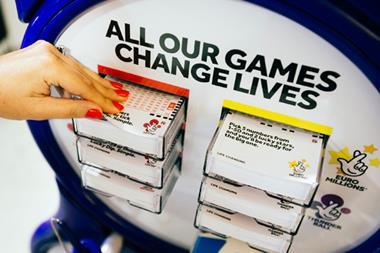Bring on the continuity people
Waitrose's meat business has achieved an enviable robustness in a volatile and much troubled sector. Mike Ingham expalins why
Tradition may have gone out of fashion in multiple retail management as troubles beset a couple of the major operators formerly boastful of their long trading histories, but experience can still be an almost tangible business asset. Richard Sadler cites the BSE crisis four years ago as proof of the commercial value stored in corporate continuity and consistency.
Sadler, Waitrose's head of meat, poultry, fish and dairy buying, recalls the sudden insecurity in the consumer market. Shoppers became deeply suspicious of beef not clearly identified by origin. "We were able to say immediately where our beef had come from. Of course we suffered, but less than the other major retailers."
The company's ability to offer its customers this reassurance was based on its short supply chain and long-established relationships, not merely with beef processors but with the farmers breeding and fattening the cattle. "We were the first to have producer groups, way back in the 1970s," Sadler points out. Farm assurance, too, was part of the package years before the concept became accepted practice in the mainstream livestock and meat trade.
Product integrity was protected revenue and this helped Waitrose reinvest to maintain supply security. "Farmers generally don't have a good opinion of supermarkets, but when the price of beef dropped in 1996 Waitrose continued to pay us more than the market rate for our Aberdeen Angus," says Bicester producer Peter Surman. "If they hadn't stood by us it would have been a disaster."
Producer groups are now commonplace, but a large minority of livestock farmers are hostile to this direct marketing system and there are persistent reports of discontent within some of the groups. Yet Sadler has a waiting list of producers wanting to join his company's 14 schemes.
The story is similar between the farm gate and the checkout. Waitrose was first to take seriously the principle of central packing. This was because the company recognised earlier than its main competitors the looming unviability of the existing model of multiple meat retailing as the market and shoppers' purchasing patterns changed. "We had a hundred butchers' shops, in effect, and this caused, or threatened to cause, real problems with further processed products," Sadler says, while admitting the transformation was not easy. "We had a steep learning curve in the late 1980s and early 1990s. It became obvious supplier rationalisation would have to be severe."
As a consequence, Waitrose was left with only half a dozen processor suppliers, two each for beef and lamb and one each for pork and bacon. The pork plant and one of the beef processing facilities have no other significant retail customers. And distribution is through just two depots.
To larger competitors this looks enviably simple. Sadler acknowledges "our small market share gives us a big advantage in communicating with our suppliers". Yet it is essential to exploit this advantage fully, because otherwise there would be clear diseconomies in the small scale.
Here again, experience and continuity count. But implicit in his description of how Waitrose's meat operation works is the role of skill rather than mere systems.
For instance, the modest scale and the regional, relatively upmarket positioning of Waitrose mean it can emphasise quality and variety in its offer. "We're never going to be price leaders," says Sadler. On the other hand, resistance to price pressure depends on demonstrable value. The little things matter a bias towards boneless, a tougher trimming policy than most multiples, an unusually thorough effort not to waste bits of the carcass useful for sausages or sandwiches.
Sadler's comments indicate he knows this could be misinterpreted as a supermarket operator trying to be a traditional butcher.
From the viewpoint of a bigger multiple, Waitrose might appear dangerously dependent on individuals' craft competence in an industry where economics supposedly demand the substitution of scale and simplicity for skill. And from an independent meat retailer's perspective, a company with 126 stores (due to reach 134 by July) is too big for personal proficiency.
But the point is that Waitrose already works this way successfully. It is not a latecomer trying to find a profitable procedure at some point across the spectrum between craft butchery and consumer goods merchandising.
Perhaps the critical distinction is between tradition and experience. Sadler is proud of having been appointed only the third central meat buyer in Waitrose's history (Heather Jenkins is the fourth, appointed since Sadler's promotion in 1994) but he does not have the timewarped attitude of those traders whose prejudices became fixed at Smithfield in the 1960s. Instead, the commercial approach and the relationships with suppliers reflect lessons learned over the years through constant adaptation and innovation.
"In a very traditional supply chain, the stability of the buying departments gives the company integrity," says Sadler. Paradoxically, this emphasis on continuity and experience provides the confidence to challenge traditionalist attitudes. Sadler is, for instance, unusually blunt by supermarket executive standards in criticising the auction system of livestock marketing.
The "auction mentality" of many producers is against their own interests, as it limits the potential of their businesses, he says. Waitrose, early into direct purchasing, had the benefit of predictability in procurement costs and now "because we've got price stability, we've got market growth".
{{Z SUPPLEMENTS }}
Close menu
- Home
- Retail & Wholesale
-
Products & Suppliers
- Back to parent navigation item
- Products & Suppliers
-
Product Categories:
- Back to parent navigation item
- Product Categories:
- Alcoholic drinks
- Bakery
- Cereals & breakfast
- Cheese
- Chicken & poultry
- Chocolate
- Confectionery
- Crisps, nuts & snacks
- Dairy
- Fish
- Fresh produce
- Frozen
- Household
- Meat
- Own Label
- Sauces & condiments
- Seasonal
- Soft drinks
- Vaping
- Vegan & plant-based
- World foods
- Suppliers
- People
- Reports & Data
-
Topics A-Z
- Back to parent navigation item
- Topics A-Z
-
Popular topics:
- Back to parent navigation item
- Popular topics:
- Cost of living crisis
- Crime
- Deposit Return Schemes
- Finance
- Government & Regulation
- Health
- Inflation
- Loyalty
- Marketing
- Mergers & Acquisitions
- New Product Development
- Sourcing
- Supply chain
- Sustainability & environment
- Technology
- Ultra Processed Foods
- Vaping
- A-Z all topics
- Content by type:
- Events
- Ask iA (beta)
- Subscribe now
Sign in to comment on this article
Not logged in before? Register for FREE guest access today.
You will be able to:
- Read more stories
- Receive daily newsletters
- Comment on stories
Advert

















No comments yet